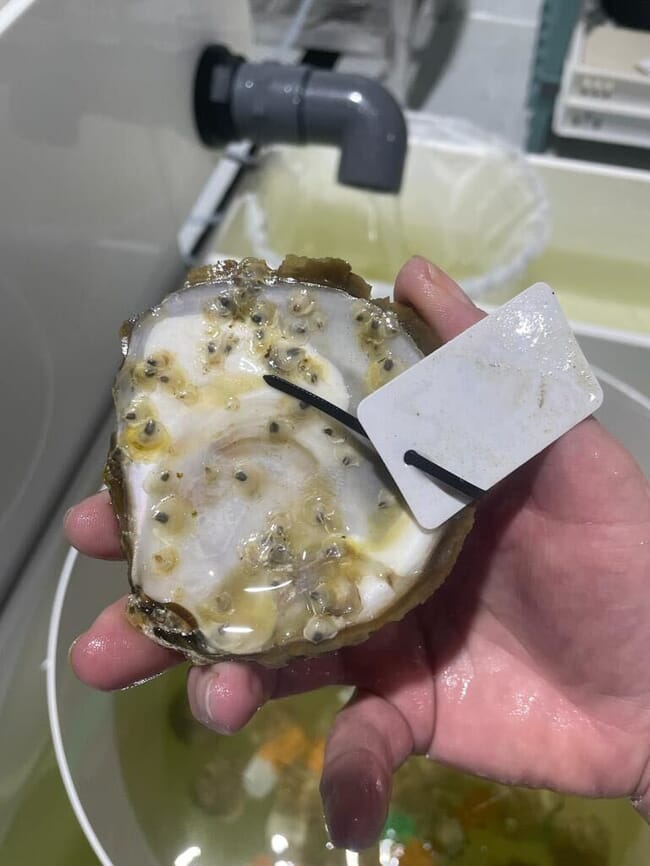
© The Oyster Restoration Company
Once abundant in the Humber estuary, the region’s oyster populations have been severely depleted due to overfishing, poor water quality, and disease. Records suggest that one historic oyster reef spanned over 300 acres, but today, the native oysters are fragmented and isolated, hindering the chances of a natural population recovery.
In light of this, the Scotland-based Oyster Restoration Company, well known for its dedication to the restoration and revitalisation of UK native oyster populations, has announced a collaboration with the Wilder Humber project – a five-year programme to restore the habitats and species of the Humber estuary. As part of this groundbreaking effort, oyster larvae will be transported from the company’s hatchery in Aultbea, Scotland, with two members of the team accompanying them on the journey to ensure their safe arrival.
The project is making history as the first UK project to trial remote setting – a method for oyster restoration where larvae are attached to a setting material and placed in a nursery before planting. In this trial, oyster larvae will be produced at The Oyster Restoration Company’s hatchery. These larvae will then be carefully transported to Spurn Point National Nature Reserve, where they will be introduced into tanks filled with scallop shells. Over three days, the larvae will attach to the shells, forming a bond that prepares them for life on the seabed. The shells carrying the settled larvae will be monitored at an oyster nursery until the young oysters are ready to be released into the Humber estuary.
“This innovative approach allows us to produce oyster larvae closer to their eventual home, minimising stress and improving survival rates,” said Dr. Nik Sachlikidis, CEO of The Oyster Restoration Company, in a press release.
“Collaborating with mission-aligned partners on Wilder Humber is a win for sustainable restoration in the UK, safeguarding Native Oysters from the brink of extinction. Together, we will shape the future of the Humber,” Sachlikidis concluded.




